The Power of Artificial Intelligence in Drones
This article was published as a part of the Data Science Blogathon.
Introduction
Nowadays, people around the world think about drones — and not just how fun they are to fly, but how much drones have improved our modern life.
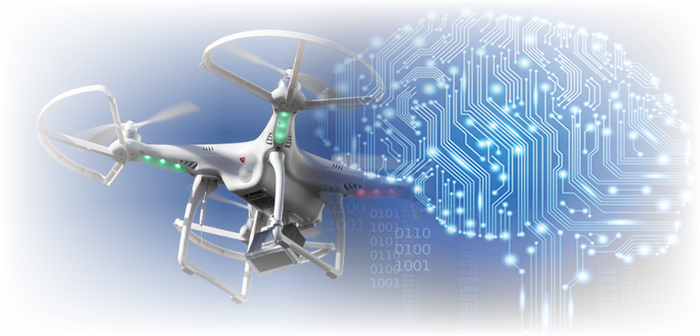
From delivering packages on demand to surveying disaster zones, drones are crucial to many businesses and civilians’ daily lives. But all this technology comes with significant overhead: as drones get more complex and sophisticated, so does the amount of work that goes into developing them and integrating their features properly.
Introducing Drones
Drones are becoming increasingly popular for a variety of uses, including photography, videography, and delivery. But what if there was a way to automate drones so that they could be used without a human operator?
That’s where artificial intelligence (AI) comes in. AI can be used to control drones so that they can fly autonomously. This means that drones can be operated without a human pilot, making them even more versatile.

There are a few different ways to automate drones using AI. One common method is using GPS coordinates to program the drone’s flight path. This can be done using software like Google Maps or even a smartphone app.
Another way to automate drones is by using object recognition. This is where the drone uses its cameras to identify objects and then navigate around them. This is useful for avoiding obstacles and potential crashes.
Finally, voice control is another option for automating drones. This involves the use of voice commands to control the drone’s movements. This can be done with a simple voice-activated controller or even through a smartphone app.
Whichever method you choose, automating your drones using AI will make them even more versatile and easy to use.
What is a drone?
Drones are unmanned aerial vehicles (UAVs) that are controlled by a remote operator or by onboard computer systems. They are increasingly being used in a variety of commercial and military applications.
How can AI be used to automate drones?
AI can be used to automate the control of drones, including their navigation and movement. This can be done using a variety of methods, including GPS tracking, computer vision, and machine learning algorithms.
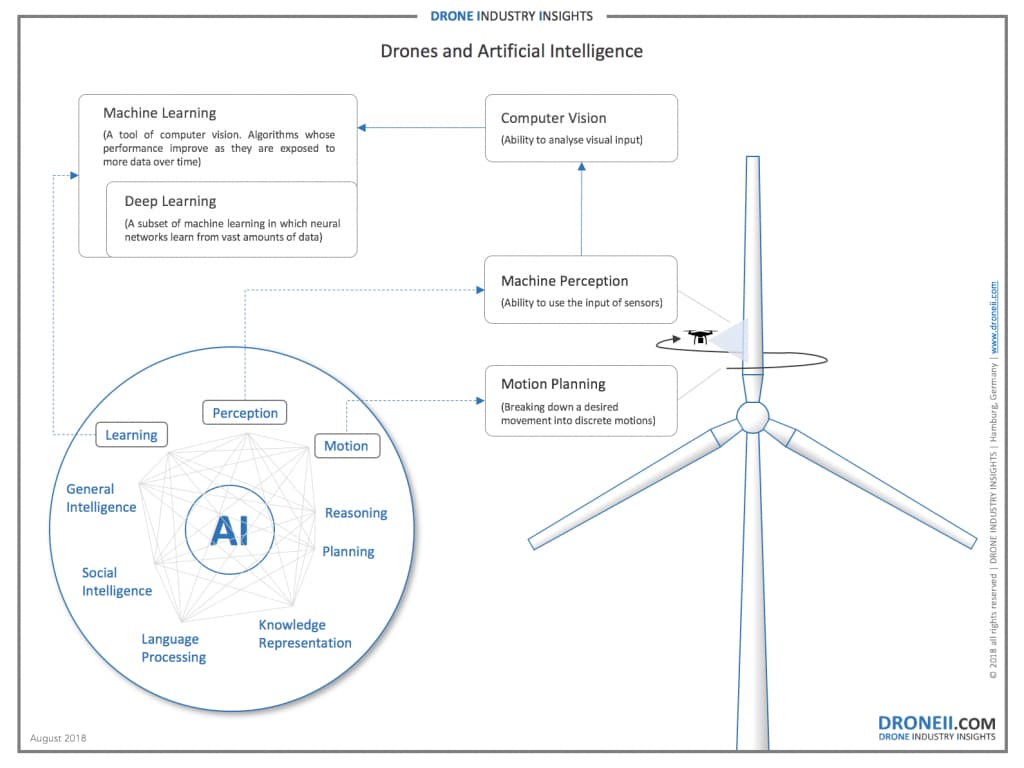
How do drones fly?
Drones are unmanned aircraft that are flown using a remote control or by following pre-programmed flight paths. Some drones are equipped with cameras and can be used for photography or video. Drones can also be fitted with sensors and used for mapping or monitoring crops or wildlife. Increasingly, drones are being equipped with artificial intelligence (AI) technology, which enables them to fly autonomously.
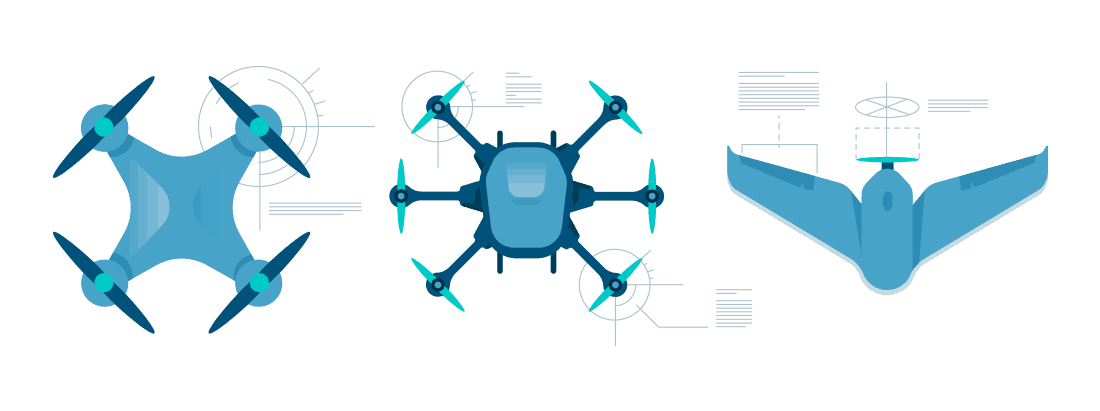
Source: https://149355317.v2.pressablecdn.com/wp-content/uploads/2017/04/top-camera-drones.png
There are several advantages to using drones equipped with AI. First, it eliminates the need for a human operator, which can be costly and dangerous. Second, it allows the drone to fly for longer periods and cover larger areas than would be possible with a human operator. Finally, it enables the drone to make decisions on its own, such as avoiding obstacles or identifying targets.
AI-equipped drones are being used in a variety of applications, including search and rescue, agricultural mapping, and even delivery of goods. As the technology continues to develop, we will likely see an increasing number of drones flying autonomously in our skies.
Who builds and makes drones? What are they used for?
Drones are becoming increasingly popular and are now being used for a variety of purposes. Several companies build and sell drones, and they are used for everything from photography to delivery.
One of the most exciting uses for drones is automation. Using AI, drones can be programmed to autonomously fly and perform a variety of tasks. This is opening up new possibilities for how drones can be used in the future.
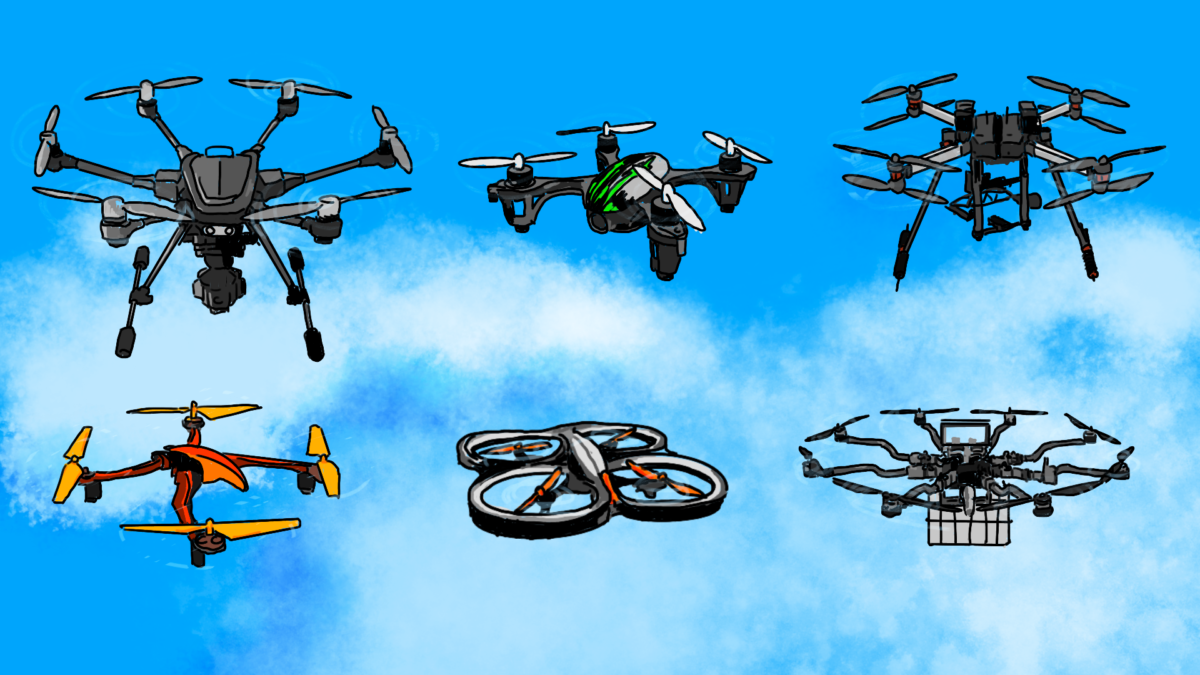
For example, imagine a drone that could be sent to deliver a package. The drone would use its AI to navigate to the address and then safely deliver the package. This would be a huge time saver and could even help to reduce traffic congestion.
Or what about a drone that could be used for security? AI-enabled drones could patrol an area and look for suspicious activity. If something was detected, the drone could raise the alarm and alert the authorities.
The possibilities are endless when it comes to automating drones using AI. This is an exciting development that is sure to change the way we use drones in the future.
Introducing Artificial Intelligence
The term “AI” stands for artificial intelligence. AI is the result of applying cognitive science techniques to artificially create something that performs tasks that only humans can perform, like reasoning, natural communication, and problem-solving. There are different levels of AI, from simple rule-based systems to complex learning machines.

Drones are one type of robot that is becoming increasingly popular and useful. They are already being used in a variety of settings, including law enforcement, search and rescue, and even farming. But what if we could take things a step further and automate drones using AI?
There are several advantages to using AI-powered drones. First, they can be used in situations where it would be too dangerous for humans to go, such as disaster areas or war zones. Second, they can fly for longer periods without getting tired, meaning they can cover more ground. Finally, they can be programmed to make decisions on their own, which means they can react quickly to changing situations.
There are some challenges to overcome before AI-powered drones become a reality. First, the technology is still in its early stages and needs to be refined. Second, there are ethical concerns about giving machines the power to make
Artificial Intelligence
Artificial intelligence (AI) can be defined as a system’s ability to correctly interpret external data, learn from such data, and use those learnings to achieve specific goals and tasks through flexible adaptation. For a system to be truly considered ‘intelligent’, it needs to exhibit all three of these key features.
Drones are unmanned aerial vehicles (UAVs) that are increasingly being used for a variety of purposes, from photography and videography to package delivery and military applications. While early drones were controlled manually by operators on the ground, newer models are being equipped with AI-powered Flight Controllers that enable them to fly autonomously.
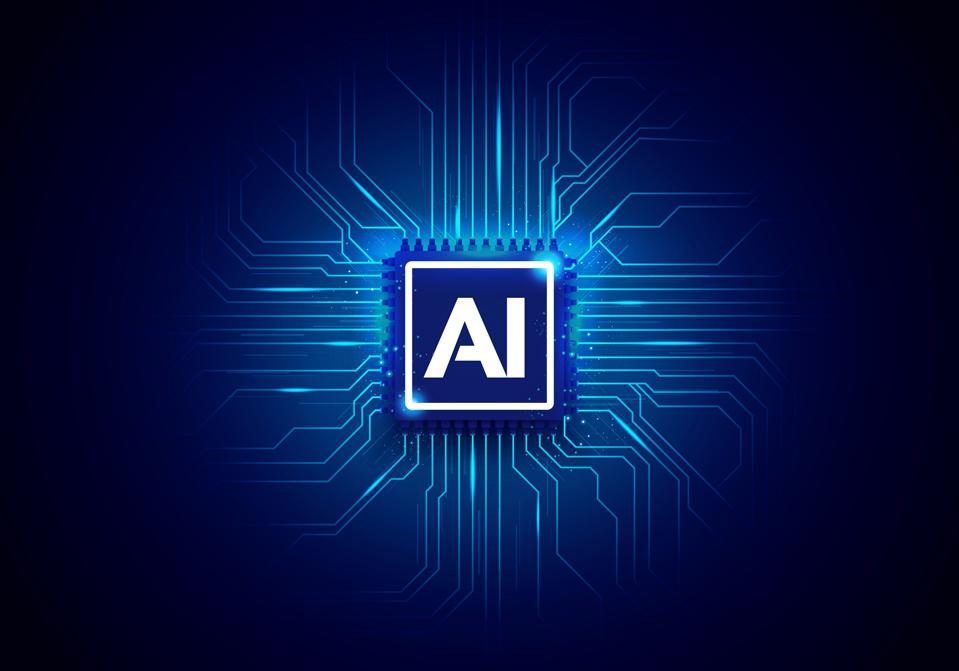
Using AI for drone automation has several advantages. First, it frees up the operator to focus on other tasks, such as making sure the drone is pointed in the right direction and monitoring its surroundings for potential hazards. Second, it can help the drone avoid obstacles and make decisions in complex situations. And third, it can enable the drone to fly in formation with other drones, which is particularly useful for military applications.
AI-powered drones are still in their early stages of development, but they have the potential to revolutionize the way we think.
The use of artificial intelligence (AI) in drones is becoming more prevalent as the technology continues to evolve. Drones are becoming increasingly autonomous, and AI is playing a big role in that trend.
AI-enabled drones can make real-time decisions on their own, without human input. This is especially useful in situations where time is of the essence, such as search and rescue missions or disaster relief efforts.
AI also allows drones to avoid obstacles and navigate through tight spaces. This is incredibly helpful when flying in crowded areas or conditions with poor visibility.
Overall, AI is making drones more efficient and effective, both in terms of their ability to gather information and their ability to carry out tasks. As drone technology continues to develop, we can expect to see even more amazing applications of AI.
Technology innovation has always entailed some form of automation. The term “Automation” was first coined in the automobile industry, and it referred to the increased use of automatic devices and controls in manufacturing processes. This revolutionized manufacturing and led to mass production. -Drones are the latest frontier of automation, and they are being used in a variety of ways, from delivering packages to taking pictures and videos. Now, there is a new application for drones: using them as flying robots that can be controlled by Artificial Intelligence (AI).
Drones have already transformed the way we live and work. They are now being used for tasks such as delivery, photography, and surveying. And with the help of AI, they are becoming even more useful. Automating drones using AI can help us achieve things that were previously not possible, or that were very difficult to do.
For example, imagine you want to take a picture of a specific building. You could manually fly a drone to the location and take the picture yourself. But it would be much easier (and cheaper) to simply tell an AI-controlled drone where to go and what to do. The drone would then fly to the location on its own and
Automating Drones using Artificial Intelligence Techniques
Developers are teaching drones to think for themselves, using AI techniques such as machine learning and computer vision. By doing so, they hope to make drones smarter and more autonomous, able to perform tasks such as obstacle avoidance and target tracking without human intervention.
One challenge in automating drones is that they have to operate in unstructured environments. This means that they need to be able to adapt to their surroundings on the fly and make decisions based on incomplete or changing information.
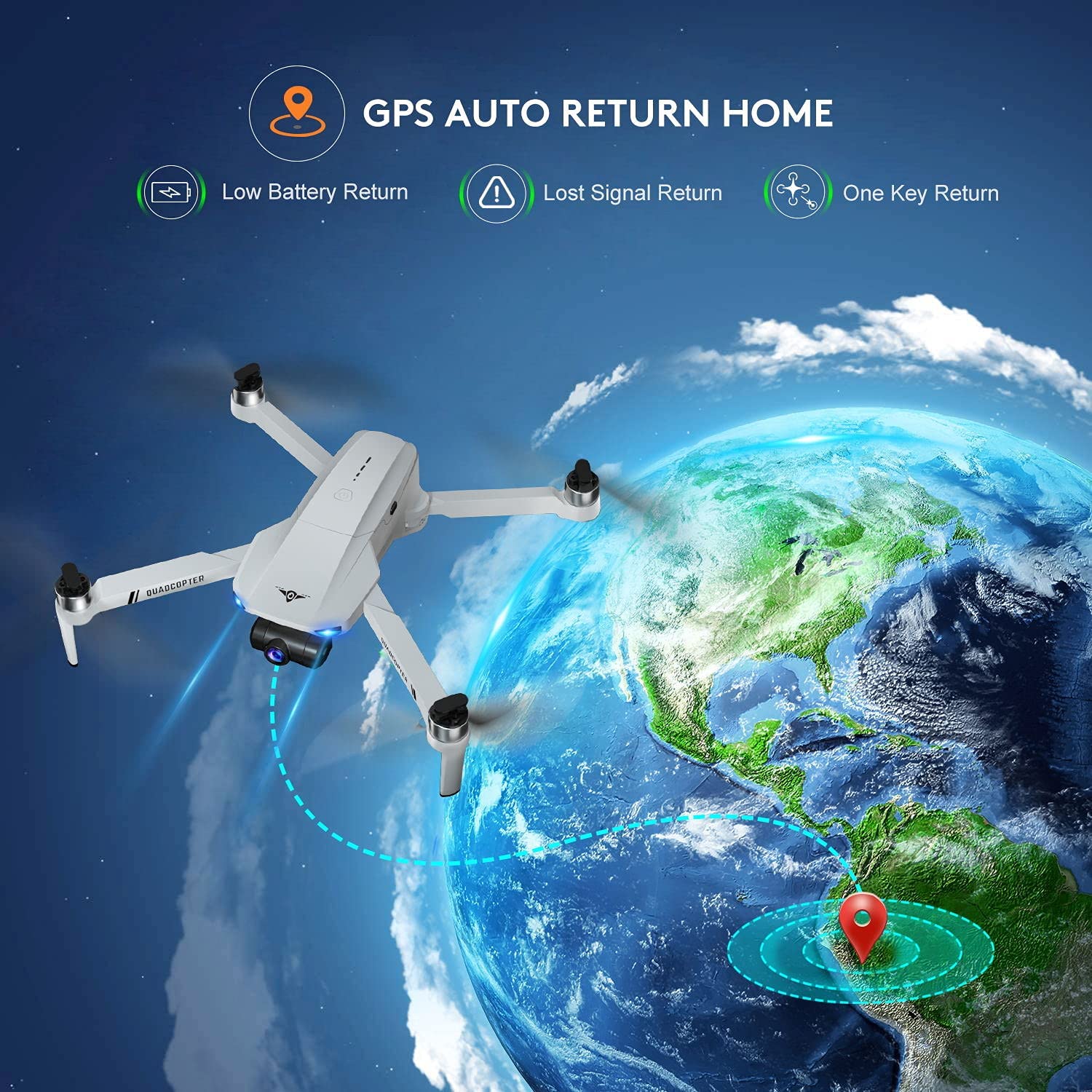
Machine learning is a promising approach for teaching drones how to do this. Using machine learning, developers can train drones to recognise objects and interpret their surroundings. This allows them to make decisions based on what they see, rather than having to follow predefined rules set by humans.
Computer vision is another key technology for making drones smarter. By equipping them with cameras and algorithms that can interpret what they see, drones can learn to navigate their environment and avoid obstacles. This is particularly important for flying drones indoors, where there are many potential hazards that they need to avoid.
Combining AI techniques such as machine learning and computer vision will allow developers to create drones that are much smarter and more autonomous than anything that exists today. This will open up
- Collection of flight data from a drone pilot
- Supervised learning algorithm
Drones are equipped with an array of sensors that can collect a large amount of data. This data can be used to train a supervised learning algorithm to fly the drone automatically.
One of the advantages of using AI to fly drones is that it can help to avoid obstacles. AI-powered drones can use their sensors to detect obstacles and avoid them. This is important for safety and can help to prevent accidents.
Another advantage of using AI to fly drones is that it can help to improve the efficiency of flights. AI-powered drones can plan their routes more efficiently and avoid wasting time or flying in circles. This can save time and money.
Overall, using AI to fly drones has several advantages. It can help to avoid obstacles, improve the efficiency of flights, and save time and money.
Conclusion to Artificial Intelligence & Drones
There is a question at the start of the article about the worth of developing AI in Drones, the answer can be understood in this article and it can also be understood by reading the below key takeaways (comment below your opinion):
# Drones have improved our modern life
# Drones are becoming increasingly popular for a variety of uses.
# Drones are unmanned aerial vehicles (UAVs) that are controlled by a remote operator or by onboard computer systems.
# AI can be used to automate the control of drones, including their navigation and movement.
# Drones are unmanned aircraft that are flown using a remote control or by following pre-programmed flight paths.
# One of the most exciting uses for drones is automation.
# AI is the result of applying cognitive science techniques to artificially create something that performs tasks
# AI-powered drones are still in their early stages of development, but they have the potential to revolutionize the way we think.
# Computer vision is another key technology for making drones smarter.
I hope you liked my article on AI and drones. Share your comments below. Connect with me on LinkedIn.
The media shown in this article is not owned by Analytics Vidhya and is used at the Author’s discretion.









thank you for the article